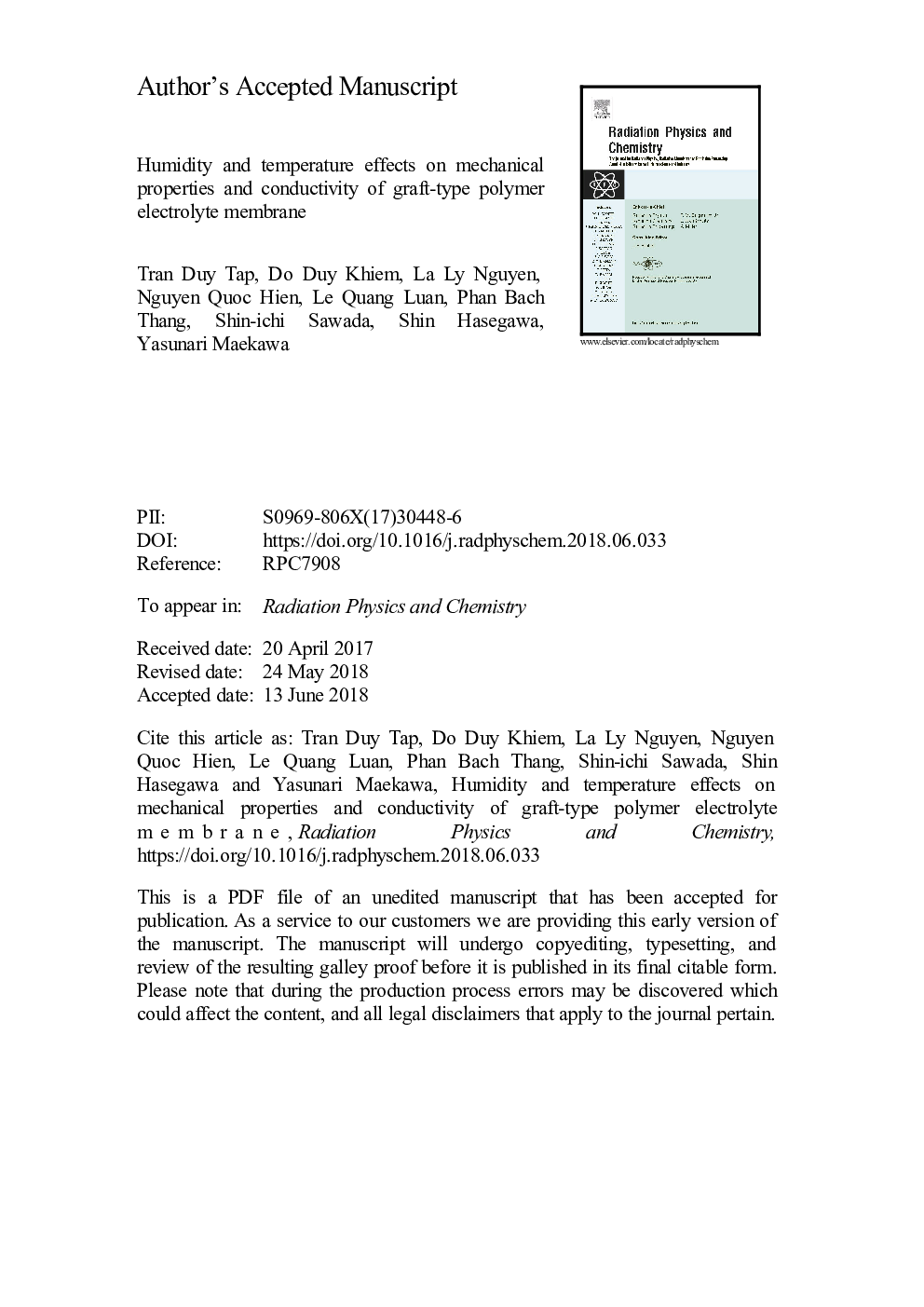| Article ID | Journal | Published Year | Pages | File Type |
|---|---|---|---|---|
| 8251348 | Radiation Physics and Chemistry | 2018 | 26 Pages |
Abstract
The relative humidity (RH) and temperature dependence of the conductance and mechanical properties of poly(styrenesulfonic acid) (PSSA)-grafted poly(ethylene-co-tetrafluoroethylene) polymer electrolyte membrane (ETFE-PEM) at a grafting degree (GD) of 36%, corresponding to an ion exchange capacity (IEC) of 2.03â¯mmol/g with Nafion-212 as a reference, were investigated. The activation energy of ETFE-PEM was 8.2â¯kJ/mol, which is lower than that of Nafion-212 (13.2â¯kJ/mol). The tensile strength of ETFE-PEM (12â¯ââ¯34â¯MPa) is higher than that of Nafion-212 (10â¯ââ¯25â¯MPa) under dry, wet, or humidified conditions (at 0% and 98% RH at 80â¯Â°C). The excellent mechanical properties of ETFE-PEM under humidified conditions can be explained by partial or total compensation effects between PSSA grafts containing water and the ETFE backbone and hierarchical crystalline structures of the membrane. The pristine ETFE, grafted-ETFE, and ETFE-PEM exhibited crystallinities of 30.3%, 22.4%, and 14.6% according to X-ray diffraction results. Thus, sulfonation strongly altered the natural crystalline structures of the pristine ETFE film. Additionally, the 112 XRD reflections played an essential role in the crystalline properties, which determined the mechanical strength of the membrane. The results indicate that ETFE-PEM with an IEC of 2.03â¯mmol/g exhibited promising electrochemical and mechanical properties under moderately severe operating conditions for fuel cell applications.
Related Topics
Physical Sciences and Engineering
Physics and Astronomy
Radiation
Authors
Tran Duy Tap, Do Duy Khiem, La Ly Nguyen, Nguyen Quoc Hien, Le Quang Luan, Phan Bach Thang, Shin-ichi Sawada, Shin Hasegawa, Yasunari Maekawa,
